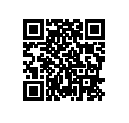An art historian’s detective work to restore a medieval prayer book has its foot in both old and new technologies with an innovative new book.
Professor Kathryn Rudy, of the School of Art History, at the University of St Andrews, has spent years tracking down the missing prints that had been pasted into a hand-written prayer book created in the year 1500. The manuscript had lost many of its illustrations as part of a trend in the nineteenth century to collect the prints unencumbered from the books that had preserved them.
Professor Rudy has painstakingly traced the lost images and reconstructed the process by which this Netherlandish book was created. Her book, Image, Knife, and Gluepot: Early Assemblage in Manuscript and Print, published by Open Book Publishers is illustrated with many of these images. However, the vast majority are not reproduced in the book but are easily available on the internet – mostly hosted by the British Museum site – and accessed via QR codes to allow the reader to access them using a mobile phone.
Professor Rudy said: “This manuscript brought together two technologies – the hand-written word, and the printed image. Bringing them together in the late fifteenth century was incredibly inventive. When curators and collectors broke the book up in the nineteenth century, they damaged the evidence. Reconstructing it today has provided fascinating insight into early experiment with printing. To tell the story using twenty-first century QR technology to link the images is particularly appropriate, given how innovative it was when it was made.”
Despite the invention of the Gutenberg printing press in around 1450, setting up a printing press had high start-up costs so hand-written manuscripts continued to be produced with people adding printed images to them. Hundreds of such images could be created with an engraved copper plate, ink and paper. These could be cut apart and pasted into the book – effectively clip art.
Today reproducing images in books remains expensive and so, as an experiment, some of the images in Professor Rudy’s book have been reproduced only as QR codes allowing readers to download the book for free and access the images through the internet on their phone.
 This QR code takes the reader to a page on the British Museum website to view a folio from a late fifteenth-century manuscript. Franciscan beghards (a kind of urban monk) living in Maastricht wrote the manuscript in the year 1500. However, they had no artistic skills so they pasted prints onto the page. In this case, they had a sheet of printed saints, cut one out, and pasted it to the handwritten page.
This QR code takes the reader to a page on the British Museum website to view a folio from a late fifteenth-century manuscript. Franciscan beghards (a kind of urban monk) living in Maastricht wrote the manuscript in the year 1500. However, they had no artistic skills so they pasted prints onto the page. In this case, they had a sheet of printed saints, cut one out, and pasted it to the handwritten page.
The monks obtained many of their prints from an enterprising German engraver named Israel van Meckenem who signed his name to all his printed sheets, even though he stole many ideas and compositions from other printers. Aim your phone at this second QR code to see an image of one of the sheets of saints he printed in the 1480s. By inking up a copper plate, he could pull hundreds of copies of this prints. The beghards bought a copy and cut out the image of St Barbara to paste into their manuscript.

